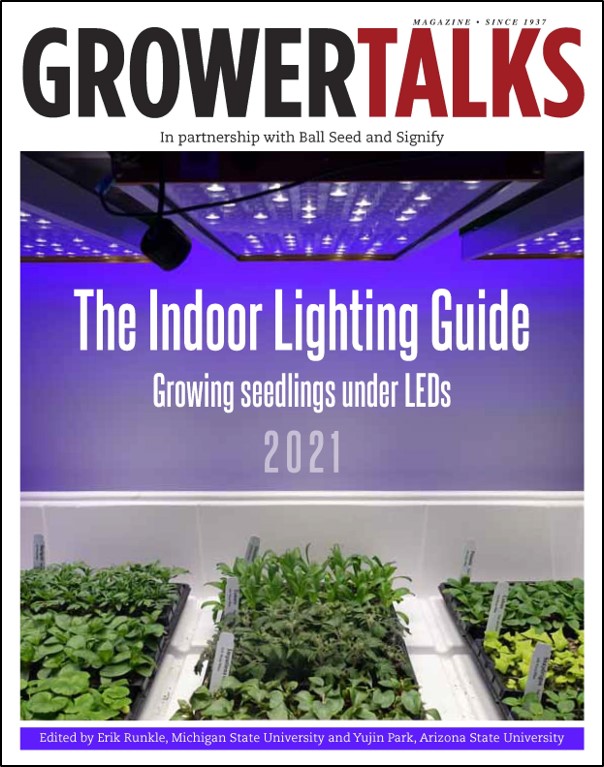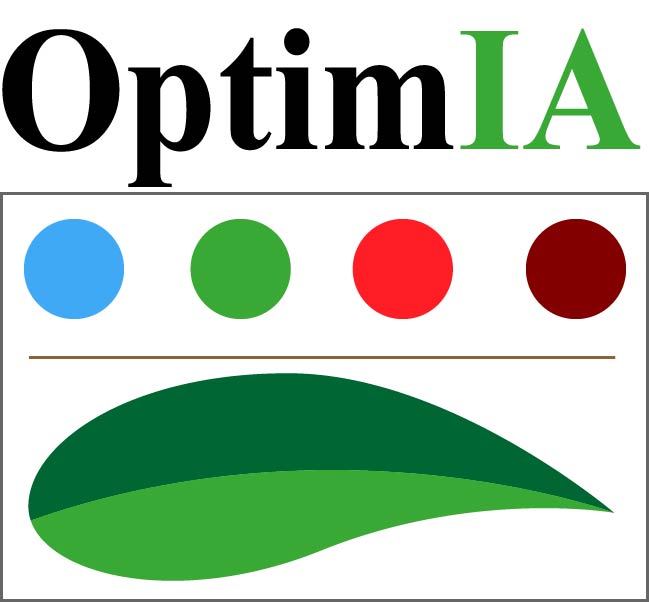Controlled-Environment Lighting Laboratory
Recent articles, videos, and highlights
- Best practices for producing culinary herbs in controlled environments (light quality). Greenhouse Management, Jan. 2025
- Extended photosynthetically active radiation can increase plant growth. Greenhouse Product News, Aug. 2024
- The transient effects of indoor lighting on lettuce production. Inside Grower, Summer 2024
- Improving lettuce nutrition & coloration with lighting. Inside Grower, Spring 2024
- Lighting plants indoors, without sunlight. Greenhouse Product News, May 2023
- A closer look at the effect of white LEDs on plant performance. Greenhouse Grower, Jan. 2023
- Inside Grower magazine series: Indoor farming FAQs
- Part 3: Answering key questions, Nov. 2022
- Part 2: More questions answered, Aug. 2022
- Part 1: Indoor farming FAQs, May 2022
- Produce Grower magazine series on indoor lighting of leafy greens:
- Part 5: Photoperiod, light intensity, and daily light integral, Mar. 2022
- Part 4: Fixed vs. dynamic light quality for indoor hydroponic lettuce, Feb. 2022

- Part 3: Far-red and PPFD: A tale of two lettuce cultivars, Oct. 2021
- Part 2: Differentiating broad spectra, Sept. 2021
- Part 1: LEDs on lettuce: White light versus red + blue light, June 2021
- The indoor lighting guide: Growing seedlings under LEDs. GrowerTalks, July 2021 low-res version (1.1 mb) or mid-res version (7.8 mb)
- Straight-up science: Vertical greens growing trend gets its own USDA grant. Vegetable Growers News, July 2021
- Do we need green light in vertical farming? ISHS Talks on Vertical Farming, July 2021
- What does a vertical farm taste like? The Counter, Sept. 2020
- Catalyzing holistic agriculture innovation through industrial biotechnology. Industrial Technology journal, Aug. 2020
- Selecting an LED fixture for indoor plant production YouTube webinar. Indoor Ag Science Cafe, June 2020
- MSU leads study exploring the viability of using indoor farming to grow leafy greens. MSU AgBioResearch, Jan. 2020
Scientific publications
Grower/industry articles
What is CELL?
The Controlled-Environment Lighting Laboratory (CELL) is a vertical farming research facility developed by Dr. Erik Runkle in the Department of Horticulture at Michigan State University. CELL consists of two independently controlled and refrigerated growth rooms, each with 12 deep-flow hydroponic shelves. Sole-source lighting in CELL utilizes customized, state-of-the-art light-emitting diodes (LEDs) and control software that enables digital light control of individual shelves. In total, 24 different lighting treatments can be delivered at one time.

Research in CELL
Indoor production of leafy greens
We are performing research on lighting to produce leafy greens indoors with desired attributes through light-mediated regulation of extension growth and leaf size, leaf thickness (texture) and color, as well as taste and nutritional value. This project is supported by the USDA and is in collaboration with horticulturists, plant physiologists, engineers, and economists at MSU, Ohio State, Purdue, and Arizona. Our primary research objectives are to 1) define and model the relationships among capex, opex, and revenues generated based on yields and high-value attributes for indoor leafy-greens production; and 2) to co-optimize indoor environmental conditions (humidity, air movement, temperature, light, and CO2 concentration) to increase yield and high-value attributes of leafy-green vegetables while minimizing opex. Visit our OptimIA project website for more information.
Below is a video by Qingwu Meng (Ph.D. graduate, and currently at Univ. of Delaware) that highlights research about how temporal changes to the indoor lighting spectrum influence growth of red-leaf lettuce. This research was recently published in Frontiers in Plant Science and a full presentation on that experiment can be viewed on YouTube.
Below are two videos that showcase some of our research inside CELL on indoor production of leafy greens. Videos by Ph.D. graduate, Qingwu Meng.
Below is a video that highlights our partnership with OSRAM to develop the lighting system in CELL, and how the facility can be used in research applications in the production of high-value specialty crops.
Indoor production of transplants
CELL has been used for another research project entitled "Development of Sole-Source Lighting Guidelines for the Production of Floriculture Transplants", which was supported by the American Floral Endowment. This project provided a better understanding of how sole-source lighting (primarily from blue, red, and far-red LEDs) affects growth and development on a range of floriculture seedling plugs, especially annual bedding plants. Trade magazine articles that feature some of our results are here.
Take a look inside
CELL is located on the first floor of the Plant and Soil Sciences Building (room A154). Students and visitors can look inside CELL through its large windows from the corridor, which can potentially spark their curiosity about high-tech indoor farming. It also serves to demonstrate indoor growing systems to inform growers and capture the interest of students and the public about this future of farming.
Acknowledgments
We gratefully thank the following for funding and support of CELL and related plant science research projects:
We also thank the following people for supporting the development of CELL:
- Doug Buhler (MSU AgBioResearch)
- Jiyong Shin, Bridget Knight, Nathan Kelly, Nate DuRussel, Qingwu Meng, Steve Brooks, and Vance Baird (MSU Horticulture)
- Jim Kells and Steve Pueppke (MSU Plant, Soil and Microbial Sciences)
- David Hamby, Rodrigo Pereyra, Charles Brunault, Alan Sarkisian, and Dorian Spero (OSRAM)
- Chris Eichelberger and Drake Stallions (OSRAM Opto Semiconductors)
- Caleb Harper (MIT Media Lab)
For research-based information on horticultural lighting, consider these resources:
- MSU's Floriculture & Greenhouse Crop Production website containing dozens of articles on plant lighting
- Light Management in Controlled Environments book edited by R. Lopez and E. Runkle (2017)
- LED Lighting for Urban Agriculture book edited by T. Kozai, K. Fujiwara, and E. Runkle (2016)
Disclaimer: Reference to companies, commercial products, or trade names does not imply endorsement by MSU or bias against those not mentioned.









 Print
Print Email
Email